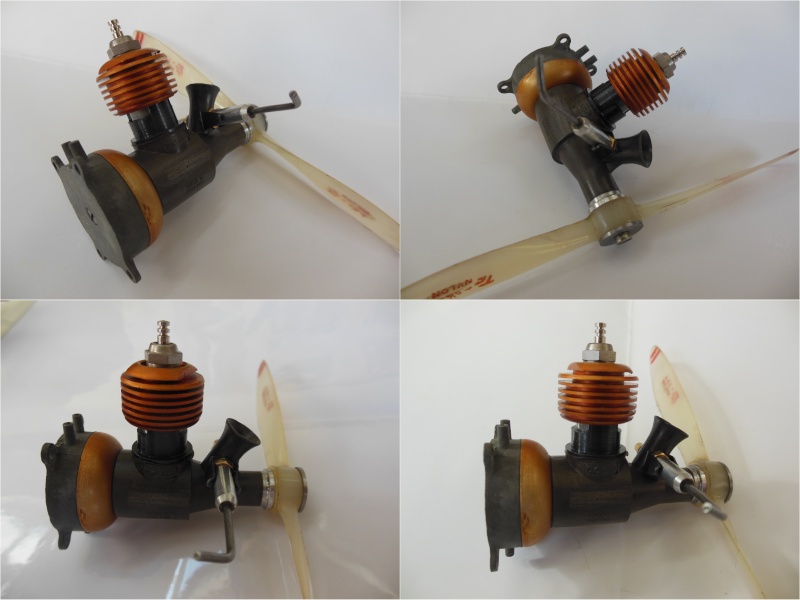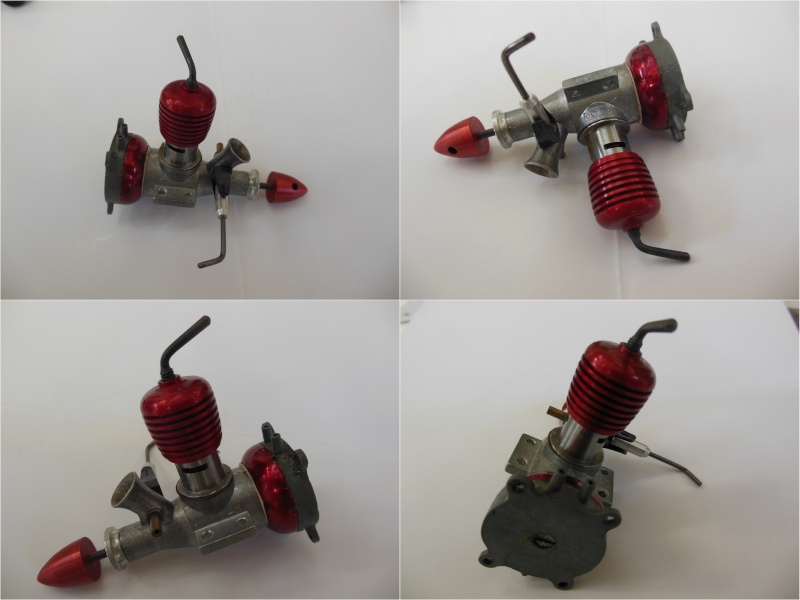Log in
Search
Latest topics
» Purchased the last of any bult engines from Ken Enyaby getback Today at 12:05 pm
» My N-1R build log
by getback Today at 11:53 am
» Free Flight Radio Assist
by rdw777 Today at 9:24 am
» Funny what you find when you go looking
by rsv1cox Yesterday at 3:21 pm
» Landing-gear tips
by 1975 control line guy Yesterday at 8:17 am
» Cox NaBOO - Just in time for Halloween
by rsv1cox Tue Nov 19, 2024 6:35 pm
» Canada Post strike - We are still shipping :)
by Cox International Tue Nov 19, 2024 12:01 pm
» Duende V model from RC Model magazine 1983.
by getback Tue Nov 19, 2024 6:08 am
» My current avatar photo
by roddie Mon Nov 18, 2024 9:05 pm
» My latest doodle...
by TD ABUSER Mon Nov 18, 2024 11:30 am
» Brushless motors?
by rsv1cox Sun Nov 17, 2024 6:40 pm
» Tribute Shoestring build
by amurphy6812 Sun Nov 17, 2024 5:43 pm
Cox Engine of The Month
DC Bee (Cox Bee competitor)
Page 1 of 1
 DC Bee (Cox Bee competitor)
DC Bee (Cox Bee competitor)
The posting by "Happydad" intrigued me as I had never heard of the DC Bee before but was well aware that in the UK the prime competitor to Cox was Davis Charlton.
The first engine I ever purchased new was the DC Bantam. This was one of the most popular engines sold in the UK but it was not good. The crankase and crankshaft were reused from a .5cc diesel engine and weren't up to the job supporting a .8cc glo. This was replaced in the 70's by the Wasp, DC's fortuned may have been different had they introduced the Wasp earlier.
My Bantam didn't last long. First landing wher the propellor didn't level out and the crankcase and crankshaft bent.
Here is a picture of the Bantam together with the crankcase and crankshaft for the Bantam and the Wasp.

As can be seen, they are both same capacity engines but the Wasp crankcase and crankshaft are much sturdier. The Bantam crankshaft is slender and not even balanced. The Wasp crankshaft is very "Coxish".
I went for the Bee described in the post even though it was not perfect and missing the needle valve assembly. I had not heard of one before this. It arrived as described.

At the same time, there or there abouts, I notice a reed valve Enya 049. That arrived exactly as described but that had a DC needle valve assembly, wrong sized screws and was sealed using red hermatite instead of gasket material. Coincidently, I new of a source for Enya gaskets, screws and needle valve assemblies. My parts box also had an Enya 049 silencer (Muffler).
The Enya was in running condition.

I also had two Wasps awaiting restoration - one just needed cleaning and the other needed a bit more than that.

As you can see a little elbow grease works wonders but back to the Bee. The Bee was a Wasp with the mounting lugs shaved off - as simple as that! Any Wasp could be turned into a Bee but the Bee that I bought was a little damaged.
More elbow grease, adonising and fettling.

Followed by:-

Then back to the Enya.

Then I came across a Wasp Special - Dieselised.

While these may not be Cox engines, they were competitors and one simple question in this site spurred me on to carry out some restorations. I hope everyone can see that even the grimmest looking purchase can be turned around.
The first engine I ever purchased new was the DC Bantam. This was one of the most popular engines sold in the UK but it was not good. The crankase and crankshaft were reused from a .5cc diesel engine and weren't up to the job supporting a .8cc glo. This was replaced in the 70's by the Wasp, DC's fortuned may have been different had they introduced the Wasp earlier.
My Bantam didn't last long. First landing wher the propellor didn't level out and the crankcase and crankshaft bent.
Here is a picture of the Bantam together with the crankcase and crankshaft for the Bantam and the Wasp.

As can be seen, they are both same capacity engines but the Wasp crankcase and crankshaft are much sturdier. The Bantam crankshaft is slender and not even balanced. The Wasp crankshaft is very "Coxish".
I went for the Bee described in the post even though it was not perfect and missing the needle valve assembly. I had not heard of one before this. It arrived as described.

At the same time, there or there abouts, I notice a reed valve Enya 049. That arrived exactly as described but that had a DC needle valve assembly, wrong sized screws and was sealed using red hermatite instead of gasket material. Coincidently, I new of a source for Enya gaskets, screws and needle valve assemblies. My parts box also had an Enya 049 silencer (Muffler).
The Enya was in running condition.

I also had two Wasps awaiting restoration - one just needed cleaning and the other needed a bit more than that.

As you can see a little elbow grease works wonders but back to the Bee. The Bee was a Wasp with the mounting lugs shaved off - as simple as that! Any Wasp could be turned into a Bee but the Bee that I bought was a little damaged.
More elbow grease, adonising and fettling.

Followed by:-

Then back to the Enya.

Then I came across a Wasp Special - Dieselised.

While these may not be Cox engines, they were competitors and one simple question in this site spurred me on to carry out some restorations. I hope everyone can see that even the grimmest looking purchase can be turned around.

ian1954- Diamond Member

- Posts : 2688
Join date : 2011-11-16
Age : 70
Location : England
Page 1 of 1
Permissions in this forum:
You cannot reply to topics in this forum

 Rules
Rules







